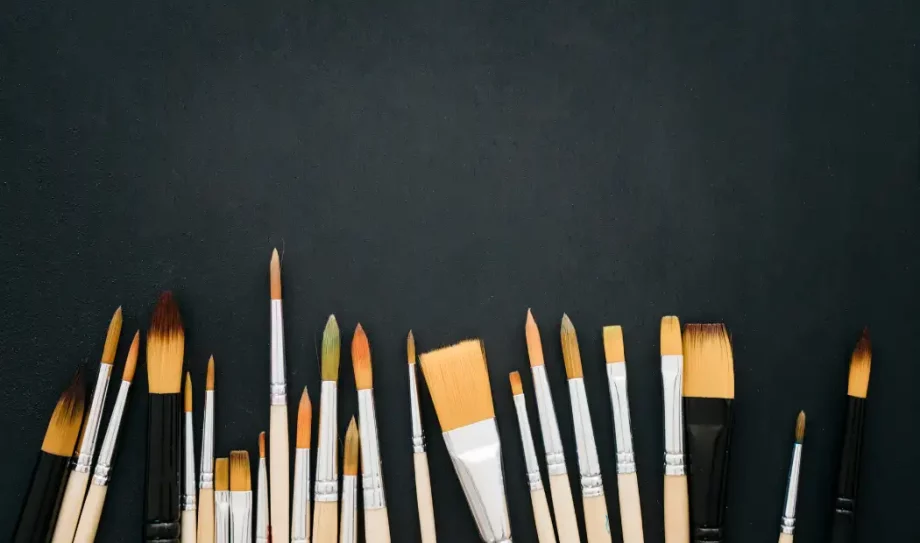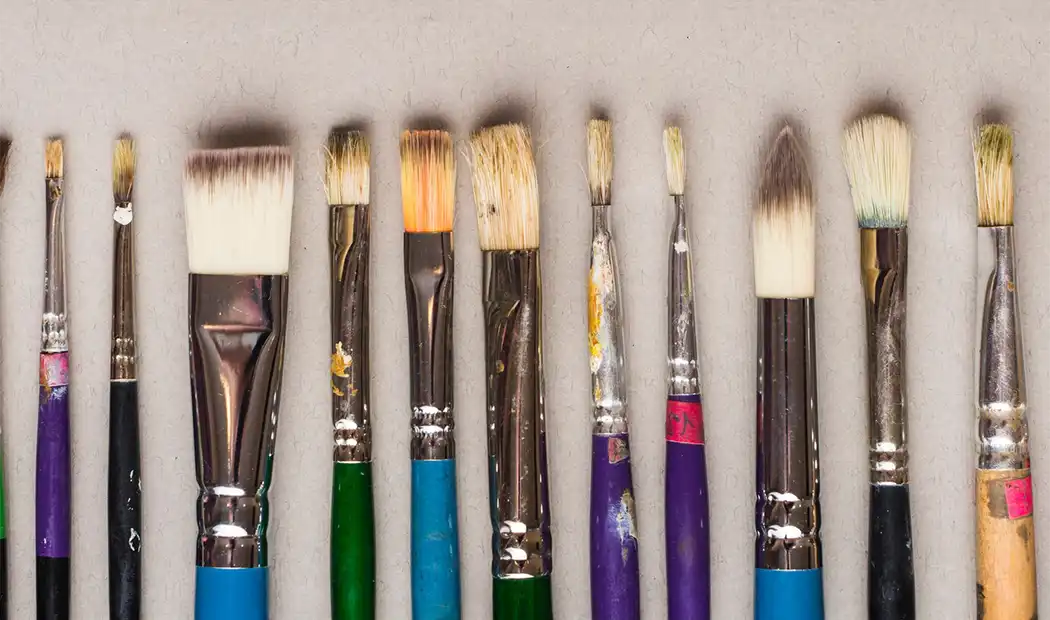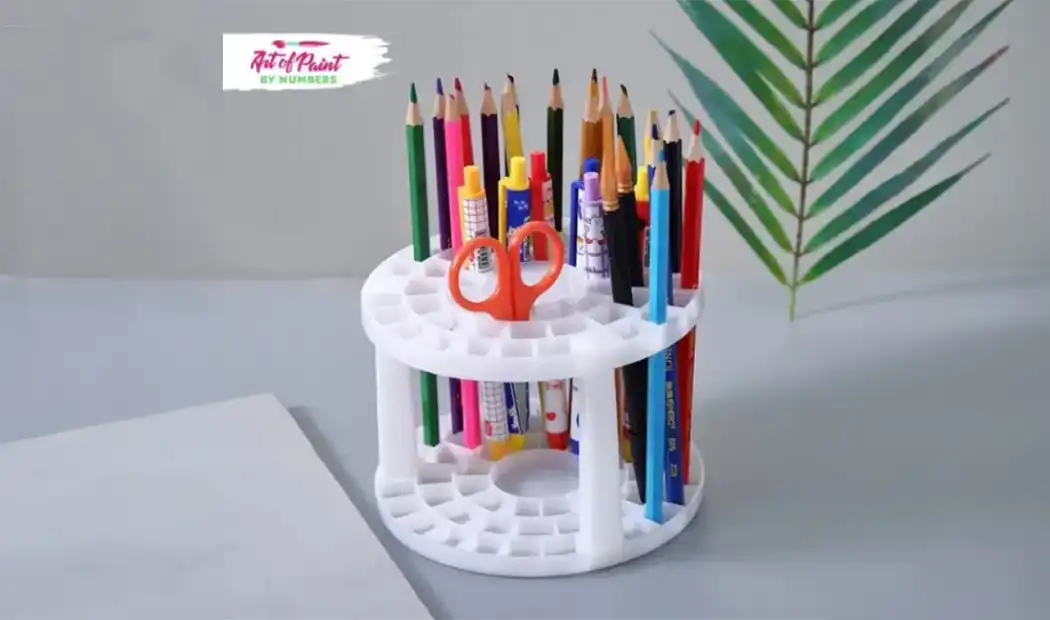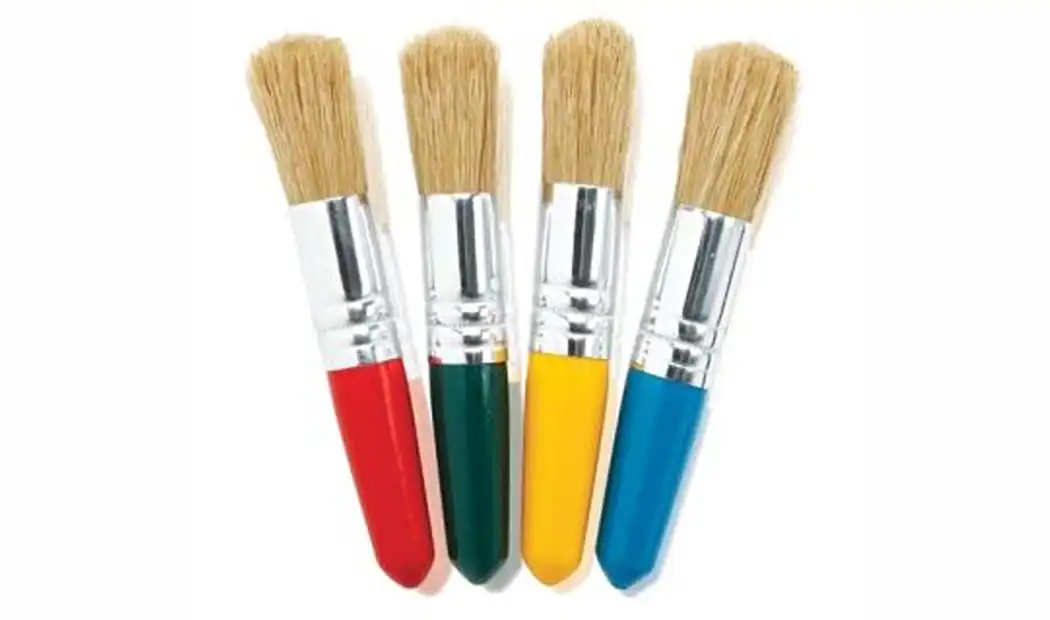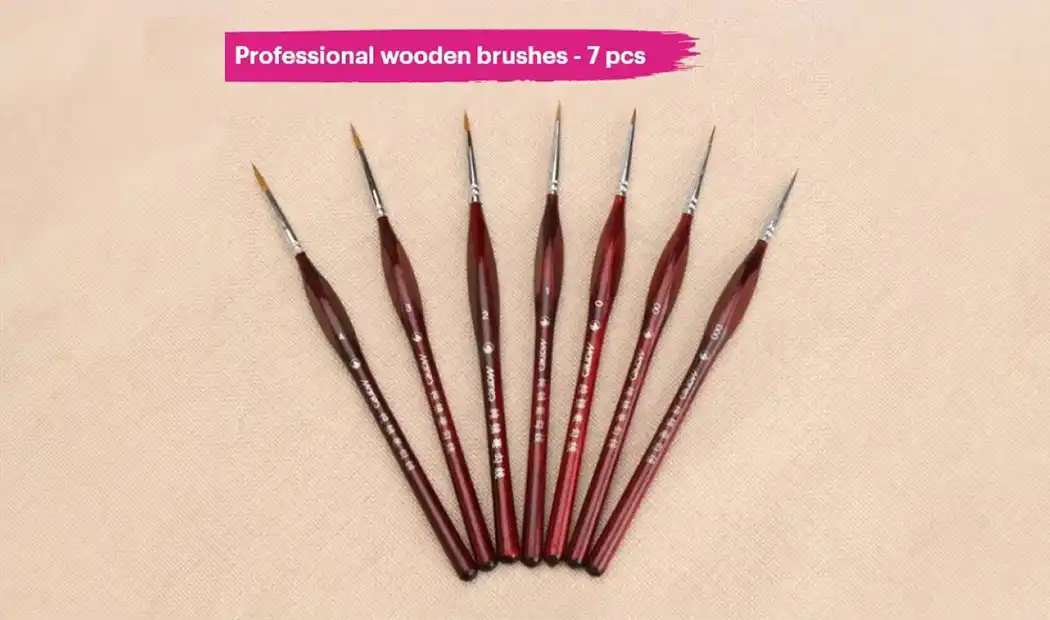Beginning your acrylic painting journey but don’t know from where to start, which design to create, or which brush to use? Whether you are an artist or a beginner at art, these acrylic painting by number kits offer it all. With selecting the right kit before commencing your artful venture, it is also essential to have some knowledge about Paint Brushes for Acrylic Painting.
And in this blog, we will explore the various types of paint brushes that are suitable for acrylic paintings. So, let’s get started and discover more about the main tool used in painting – Paint brushes!
Brush Sizes
- Size 00 to 0: The tip of this brush is very fine, making it ideal for intricate details and fine lines.
- Size 1 to 2: This is a small brush that is perfect for detail work and precision.
- Size 4 to 6: These medium-sized brushes are used both for detail work and broad strokes.
- Size 8 to 12: The larger brushes are suitable for bigger areas of canvas.
Bristle Material: Synthetic vs. Natural
Synthetic Fibers: Such best paint brushes for acrylic painting are made from nylon or polyester. The brushes made with synthetic fibers are durable, versatile and can mimic the natural bristles. It is less expensive and perfect for acrylics and watercolor paints.
Natural Hair: There are the best paint brushes for acrylic made with the natural hair of animals. They are made with the hair of sables, hogs, pony and other animals. They are great for texture and bold strokes.
Types of Paint Brushes for Acrylic Painting
1. Flat Brush:
Shape – Rectangular with a flat edge.
The flat paint brushes for acrylic painting cover large areas as they have a flat edge that is perfect for creating sharp lines and bold strokes. These acrylic brushes are perfect for detail work with the corner of the brush.
2. Round Brush:
Shape – Rounded tip that tapers to a point.
The round best brushes for acrylic painting can be used for both detail work and broader strokes. The pointed tip allows you to create fine lines and intricate details, whereas the roundness helps you cover large parts of canvas with its sweeping strokes.
3. Filbert Brush:
Shape – Oval or rounded edge with a flat ferrule.
Filbert Brush is a combination of both round and flat brushes. The rounded edge makes it suitable for blending and softening edges, while the flat side is good for controlled, broader strokes. It is effective for creating rounded shapes and for painting smooth transitions in color.
4. Angle Brush:
Shape – Slanted bristles that form an angle.
The angled bristles are great for precise line work and painting in tight or hard-to-reach areas. This brush can create clean lines and angles, making it useful for geometric shapes, edge work, and detailing.
5. Fan Brush:
Shape – Fanned out bristles arranged in a fan shape.
The fan paint brushes for acrylic painting are perfect for creating textures and patterns like foliage, fur, or clouds. Its shape allows for interesting texture effects and can be used for stippling or creating natural, random patterns.
6. Mop Brush:
Shape – Long, thin, and round.
The mop brushes for painting acrylic are excellent for blending and broad strokes. The large, soft bristles are great for creating smooth transitions between colors and for laying down large areas of paint with a soft touch.
7. Detail Brush:
Shape – Large, round, and fluffy.
Such best painting brushes for acrylic are perfect for extremely detailed work. The fine tip allows for intricate patterns and precise control, making it ideal for fine lines, small details, and delicate elements in a painting.
Paintbrush Holders & Other Equipment
Brush Holder Stand:
A brush holder stand is a practical tool designed to hold paint brushes upright, typically featuring slots, holes, or clamps that secure the brushes in place. This will keep the brushes organized, easy to access and in proper condition.
Key Features
- Slots: The slots or holes are designed to hold brushes securely. These holes are different in size and are perfect for different brush handles.
- Non Slip Base: A sturdy base ensures the stand remains stable on the workspace, preventing spills and accidents.
- Rotating Base: Some brush holders come with a rotating base and help artists pick the brushes without moving the stand.
Brush Rinsing Cups:
Brush rinsing cups are specially designed containers that help in the cleaning and rinsing of paint brushes during and after a painting session. These cups help you clean brushes, ensuring you do not mix colors unintentionally.
Key Features
- Mesh Grid: The brush rinsing cups have a mesh grid at the bottom of the cup, which helps in removing paint from the brush.
- Lid with Brush Slots: These cups have a lid that has slots for holding brushes upright that can help keep brushes organized and prevent them from rolling off the workspace.
- Portable Design: The brush rinsing cups are lightweight and compact, which makes them easier to transport.
Paint Brush Case:
A brush case is created with multiple pockets or slots, and each slot can hold a single brush securely in place. It also protects the brushes from damage, extends brush life and is perfect for traveling artists.
Key Features
- Multiple Pockets: The paintbrush case can hold brushes individually, and it prevents them from causing bristle damage.
- Protective Material: The brush case can be made from durable materials such as canvas, nylon, leather, or hard plastic to protect brushes from environmental damage and wear.
- Secure Closure: It features zippers, snap buttons, or ties to keep the roll or case securely closed during transport.
Paint Brush Rinser:
A portable brush rinser is an efficient way to clean their brushes while traveling or working in small spaces. They typically include features that facilitate thorough brush cleaning, such as built-in cleaning grids or sponges.
Key Features
- Compact Design: The portable brush rinser is small and easy to carry, which makes it perfect for artists.
- Lightweight: The rinser is made from lightweight materials to enhance portability without compromising on durability.
- Built-in Cleaning Grid: It features a textured grid at the bottom to help remove paint from brush bristles efficiently.
Baby Paint Brushes:
Baby paint brushes are tools created for young children. These brushes are crafted with safety and ease of use in mind, featuring vibrant colors, durable construction, and easy to clean. Their design encourages creativity and helps develop fine motor skills.
Key Features
- Soft Bristles: The baby paint brushes are made with soft and synthetic materials that prevent any discomfort or harm to the skin.
- Ergonomic Handles: Such brushes have thick and short handles created for small hands, making it easy to grip and control.
- Non-Toxic Materials: The best brush for acrylic paint is created with non-toxic materials that are safe for children.
Paint Brush Set for Acrylic Painting
Basic Set (6-8 Brushes)
| Round Brush | Flat Brush | Filbert Brush | Angle Brush | Fan Brush | Detail Brush |
| 2 Sizes | 1 Size | 1 Size | 1 Size | 1 Size | 1 Size |
Intermediate Set (10-12 Brushes)
| Round Brush | Flat Brush | Filbert Brush | Angle Brush | Fan Brush | Detail Brush | Mop Brush |
| 3 Sizes | 2 Size | 2 Size | 1 Size | 1 Size | 1 Size | 1 Size |
Professional Set (15-20 Brushes)
| Round Brush | Flat Brush | Filbert Brush | Angle Brush | Fan Brush | Detail Brush | Rigger Brush | Mop Brush |
| 4 Sizes | 3 Size | 3 Size | 2 Size | 2 Size | 2 Size | 1 Size | 1 Size |
How to take care of paint brushes?
1. Immediate cleaning: Rinse brushes with warm water immediately after painting and make sure to prevent paint from drying. You can wash the brushes with an acrylic brush cleaner to remove any remaining paint. Once cleaned, rinse the brush under warm, running water until the water runs clear and all soap is removed.
2. Reshaping bristles: Reshaping the bristles will extend the lifespan of the brushes. Properly reshaping the bristles helps the brush retain its original form, which is essential for achieving precise and consistent results in your artwork.
3. Drying: Lay the brushes flat on a clean, dry towel or paper towel to air dry. Avoid leaving them in a cup with bristles down, as this can cause the bristles to become misshapen or damaged. Some brushes, especially those with long handles, can be hung upside down to dry.
4. Storage: Store brushes upright in a stand or brush holder to keep their bristles from getting bent or deformed. Also, make sure that the brushes are not placed under heavy objects or cramped spaces so that the brushes are not damaged.
5. Regular maintenance: Regularly clean your paint brushes for acrylic painting with a brush cleaner and help remove any built up residue that requires thorough cleaning. While cleaning, remember to check for any signs of damage and replace the damaged brushes.
6. Avoid common mistakes: Never let the paint dry on the brush, as it can damage the bristles and make cleaning difficult. Avoid harsh chemicals and soaking brushes in water for long periods, as this can weaken the glue holding the bristles.
How to clean acrylic paint brushes?
- Rinse with brush: Quickly rinse the paint brushes for acrylic painting using soap and ensure all soap and paint are washed out.
- Post cleaning care: Reshape the bristles and dry the brush completely.
- Deep cleaning: For deep cleaning, use acrylic brush cleaner for stubborn residue. Soak in water and clean, then rinse thoroughly.
Summing Up!
As we wrap up the paint brushes for acrylic painting adventure, we find that the right set of paint brushes will make your journey wonderful and will surely unlock your artistic potential. From painting intricate details to large areas, these brushes can easily help you achieve the best results.
Remember, the joy of painting by number is not just about the finished artwork—it is about the satisfaction of each brushstroke and the creative journey along the way. So, pick up your brushes and let your creativity flow with Art of Paint by Numbers!


